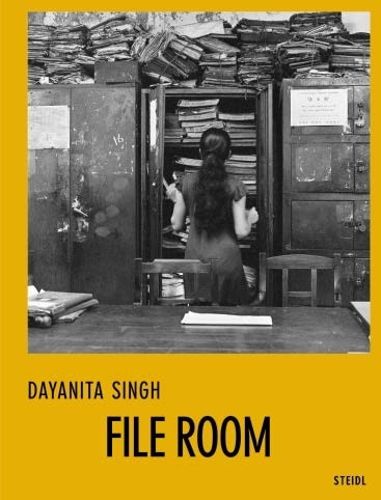Readings Newsletter
Become a Readings Member to make your shopping experience even easier.
Sign in or sign up for free!
You’re not far away from qualifying for FREE standard shipping within Australia
You’ve qualified for FREE standard shipping within Australia
The cart is loading…






'At the heart of a working archive was a greater impossibility- a dogged but doomed attempt at mapping the chaos and brittleness of life itself.' - Aveek Sen
This is the long-awaited new edition of Dayanita Singh's File Room, her first book dedicated to the archive, and published by Steidl in 2013. Singh's images of archives and their custodians across India examine how memory is made and how history is narrated. Her photographs bring to light the paradoxes of archives: while impersonal in their classifications, each is the careful handwork of an individual archivist, an unsung keeper of history whose decisions generate the sources of much of our knowledge. Archives are vessels of orthodox facts but also the home of neglected details and forgotten documents that can unsettle the status quo. As the pace of contemporary India accelerates and its people continue to turn from the past and fix their gaze on the future, what will become of the archive? Singh prompts us to imagine archives not merely as documents of dusty scholarship but as monuments of knowledge, beautiful in their unkempt order.
$9.00 standard shipping within Australia
FREE standard shipping within Australia for orders over $100.00
Express & International shipping calculated at checkout
'At the heart of a working archive was a greater impossibility- a dogged but doomed attempt at mapping the chaos and brittleness of life itself.' - Aveek Sen
This is the long-awaited new edition of Dayanita Singh's File Room, her first book dedicated to the archive, and published by Steidl in 2013. Singh's images of archives and their custodians across India examine how memory is made and how history is narrated. Her photographs bring to light the paradoxes of archives: while impersonal in their classifications, each is the careful handwork of an individual archivist, an unsung keeper of history whose decisions generate the sources of much of our knowledge. Archives are vessels of orthodox facts but also the home of neglected details and forgotten documents that can unsettle the status quo. As the pace of contemporary India accelerates and its people continue to turn from the past and fix their gaze on the future, what will become of the archive? Singh prompts us to imagine archives not merely as documents of dusty scholarship but as monuments of knowledge, beautiful in their unkempt order.